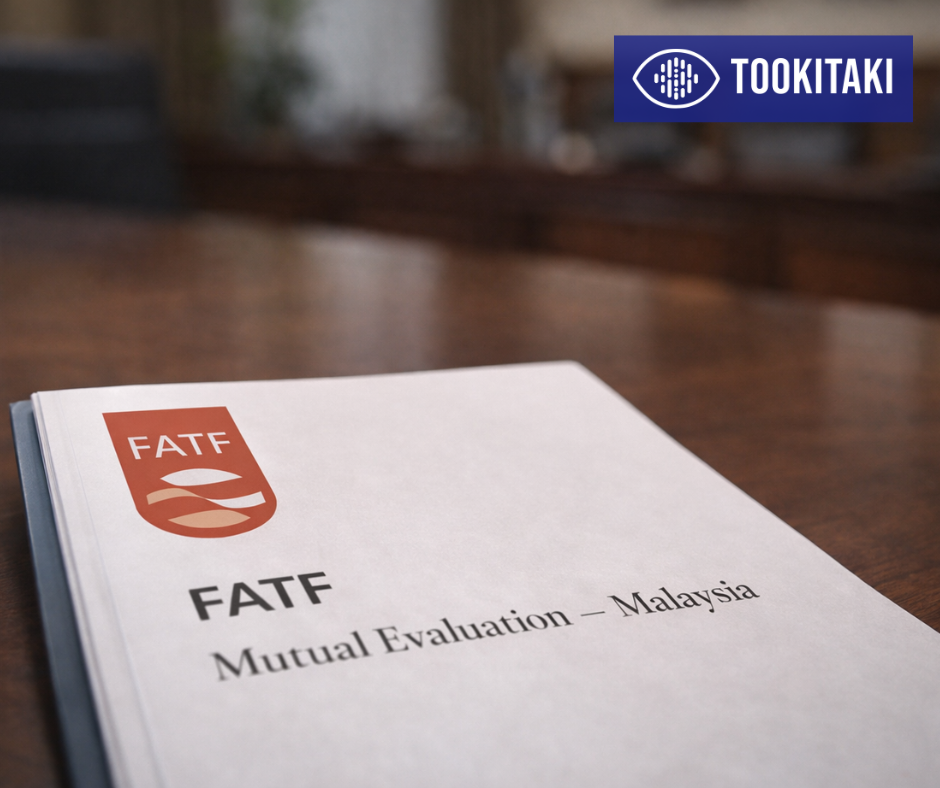How FinTech is advancing AML Controls in the UAE?
.svg)
With the advent of new technology, the way we conduct financial transactions has changed dramatically. We have gone from a world where cash was king to one where digital transactions are the norm. This shift has been especially pronounced in the Middle East, where a region traditionally dominated by physical currency is now embracing digitization and taking measures to increase innovation.
Compared with Europe’s annual growth of 4-5 percent, consumer digital payment transactions in the UAE grew at a rate of over 9 percent between 2014 and 2019. In 2022, digital payment volumes from SMEs grew by 44%, according to a report by McKinsey and Co.
Along with new opportunities, the growing cashless society in the Middle East has presented the need for new onboarding and ongoing due diligence mechanisms within fintech companies, with an increasing reliance on technology to fight financial crime. As more and more businesses move online, it's no surprise that financial crime is following suit.
The move to a cashless society in the Middle East presents both challenges and opportunities for anti-financial crime professionals. Traditional methods of due diligence and onboarding are no longer sufficient in a digital world. In order to explore some of the critical things that financial institutions need to know to ensure financial crime compliance in line with growing digitalization, Tookitaki conducted a webinar on December 13 as part of our Compliant Conversations webinar series.
Moderated by Gloria Chraim, Tookitaki’s Regional Head of Sales (MEA), we were fortunate to have on board Meyya EL Amine, Chief Compliance Officer at Yap Payment Services, and Gurminder Kaur, Head of Compliance at Al Rostamani International Exchange, as our key speakers in the webinar. The speakers covered topics such as addressing the shift from traditional banking to digital banking, how new trends and technologies are shaping up the anti-financial crime efforts in the Middle East and how the regulatory landscape is changing to support the continued adoption of technology. The speakers also shared tips for fintech companies to stay proactive and ensure compliance with holistic visibility and better insights into customer behaviour and identifying suspicious activities at large.
The Rising Popularity of Digital Banking in the UAE
In the UAE, digital banking started with individuals, however, the sector has now grown to incorporate small and medium enterprises (SMEs) and even bigger companies. In digital banking, automation, multimedia and telecom came together to give customers a seamless banking experience. Compared to traditional banking, it is faster, more convenient, customer friendly and smart.
During the pandemic, the existing digital infrastructure in the UAE came to people’s rescue and they happily embraced digital banking and digital financial services. The emergence of digital banking positively impacted the way how financial institutions do their regulatory filing that too have gone digital to a large extent. The UAE government and the regulatory authorities were well prepared for the change as they have already laid down measures supported by a great infrastructure.
The Opportunities and Challenges of a Cashless Economy
The transition to a cashless economy has the potential to bring many benefits, such as increased convenience and speed of transactions, reduced costs for businesses and financial institutions, and improved financial inclusion for underserved populations.
However, the transition to a cashless economy also presents some challenges that the UAE must carefully address in order to ensure a smooth and successful transition. Some of the key opportunities and challenges of a cashless economy in the UAE are discussed below.
Opportunities:
Increased convenience and speed of transactions: Digital payment methods are typically faster and more convenient than using cash, allowing for more efficient transactions and reducing the time and effort required for both consumers and businesses.
Reduced costs for businesses and financial institutions: A cashless economy can help reduce the costs associated with handling and transporting physical money, such as security and transportation expenses. This can be particularly beneficial for small businesses and financial institutions.
Improved financial inclusion: A cashless economy can help improve access to financial services for underserved populations, such as migrant workers or rural communities. This can help promote economic growth and reduce inequality.
Challenges:
Access to technology and financial services: In order for a cashless economy to be successful, everyone must have access to the necessary technology and financial services. This can be a challenge in the UAE, where there is a large population of migrant workers who may not have access to bank accounts or the means to use digital payment methods.
Impact on small businesses and traditional industries: The transition to a cashless economy may be difficult for small businesses and traditional industries that do not have the infrastructure or resources to support digital payment methods. These businesses may struggle to compete with larger, more technologically advanced companies if they are unable to accept digital payments.
Money Laundering/Terrorist Financing Risks: A cashless economy can make it easier for criminals to conduct financial transactions without leaving a paper trail, making it more difficult for law enforcement agencies to detect and prevent money laundering and terrorist financing.
Cybersecurity risks: As more transactions are conducted digitally, there is an increased risk of sensitive financial information being compromised. The UAE must take steps to ensure the security of digital payment systems in order to protect against fraud and hacking.
Overall, while the transition to a cashless economy in the UAE has the potential to bring many benefits, it is important for the government and other stakeholders to carefully address these challenges in order to ensure a smooth and successful transition.
The Gaps of Traditional Approaches to Fighting Financial Crime
With financial channels going online, the bad actors have more chances for their illicit activities, taking advantage of possible gaps in the digital financial system. Regulatory scrutiny over financial institutions has continued to increase and fines have been rising too. It might be because of a disconnect between what we have been practicing and what needs to be done given the changing scenarios.
We still create customer risk profiles n silos. Within compliance, customer screening, transaction monitoring and customer risk scoring processes do not speak to each other, thereby failing to provide a holistic view of the customer. This is one of the reasons why the traditional rule-based or scenario-based approaches are failing today. With a huge customer base, where the data fields are static and are not regularly updated, the actual customer risk remains not captured. Compliance analysts are often burdened with a large number of alerts, leading to the possibility of many high-risk customers remaining unaffected.
.webp)
The Need for New Onboarding and Ongoing Due Diligence Mechanisms
Rule-based customer risk assessment is no longer an option. This needs to be done in a dynamic fashion and on an ongoing basis. If our data on customer is obsolete or not up to the mark, then definitely we will feel the pinch as those data is the basis of all our customer risk assessment, transaction monitoring and name screening processes. Despite the possibilities of fraud, digital know your customer or KYC has actually come as a boon as it helps in remediating your data issues to a large extent. However, digital KYC alone is not going to help us; we need to feed the digital KYC systems properly.
We need to first understand our data and segment our customers. There cannot be a one-size-fits-all approach. Customers need to be segmented based on geographies, nationalities, occupation, industries, etc., depending on the business model, and proper risk values or scores need to be determined for each customer. Based on perceived risk, the nature of questions at the time of onboarding can be simplified or made tougher.
Technologies like Optical Character Recognition (OCR) and facial recognitioncan also help to a great extent. OCR can take old data, validate it and populate it into a more readable, more accurate form. With facial recognition, we can have liveliness check, biometrics assessment and validate the customer with a central database. Ongoing due diligence is also required to feed the customer risk rating models. This will help rescore customer risk dynamically at regular intervals or if there are any changes in the original customer profile.
The Impact of New Trends and Technologies on Compliance
The UAE in particular and the GCC or MENA region in general are embracing the risk-based approach (RBA) to fighting financial crime. Today, the compliance trend is to have easily verifiable and real-time channels for customer identification documents and commercial registries. Technology is helping us a lot in compliance, and the regulatory requirements are also boosting technology to be more innovative, smarter and quicker. All of us, the customers, the businesses and regulators, are benefiting from it. Businesses are even using it for understanding the consumer better and customise their product and service offerings.
This is all coming to the surface of the final consumer and the business. Even though it is compliance related and a part of regulatory requirements, it is serving us immensely and it's growing exponentially.
The Role of Technology in Fighting Financial Crime
Technology plays a crucial role in the fight against financial crime by providing tools and systems that can help detect and prevent illegal activities.
- Machine learning is a type of artificial intelligence that involves training algorithms on large amounts of data to enable them to make predictions or take actions based on that data. This technology can be used in the fight against financial crime by providing algorithms with data on past financial crimes, such as money laundering or fraud. The algorithms can then learn to identify patterns and anomalies in financial data that may indicate illegal activity.
- One potential application of machine learning in the fight against financial crime is in the detection of money laundering. By analyzing transaction data, algorithms can learn to identify the characteristics of money laundering transactions, such as the use of multiple bank accounts or the movement of money through different countries. This can help law enforcement agencies and financial institutions detect potential money laundering activities and take action to prevent them.
- Another potential application of machine learning in the fight against financial crime is in the detection of fraud. Algorithms can be trained on data from past fraud cases to learn the patterns and characteristics of fraudulent transactions.
- Overall, machine learning has the potential to play a significant role in the fight against financial crime by providing algorithms with the ability to identify patterns and anomalies in financial data that may indicate illegal activity.
- Another way that technology is used in the fight against financial crime is through the development of secure payment systems. These systems use encryption and other security measures to protect financial transactions and prevent fraud. This can help protect consumers and businesses from becoming victims of financial crimes.
- Additionally, technology is also used to improve communication and collaboration among law enforcement agencies, regulatory bodies, and financial institutions. This can help these organizations share information and collaborate effectively to combat financial crime.
The Importance of Collective Intelligence
Collective intelligence can play an important role in fighting financial crime by allowing organisations and individuals to share information and resources, coordinate efforts, and work together towards a common goal. For example, financial institutions can use collective intelligence to share information about suspicious transactions and patterns of behaviour that may indicate financial crimes such as money laundering or fraud. This can help identify potential threats and enable law enforcement and other agencies to take action.
In addition, collective intelligence can be used to develop and improve algorithms and other technologies for detecting and preventing financial crimes. By pooling their expertise and resources, organisations and individuals can work together to create more effective solutions for detecting and preventing financial crime.
The Change in Regulatory Landscape to Support Tech Adoption
The regulatory acceptance to new technology has come at a very fast pace. The regulators are not just interested in that you have a system, rather they are interested in knowing why do you have that system. They're interested in understanding that whether you have the know-how of your technology, customer base and typologies, and whether that has been correctly embodied them in your customer risk assessment model.
Regulators can play an active role in bringing standardization in compliance technology adoption also. The federal registry, the IP validations for retail customer database and the public registry for the beneficial ownership are proactive measures from the regulators to ensure that the financial industry is upgrading itself with newer systems.
One example of a change in the regulatory landscape to support tech adoption is the growth of regulatory sandboxes. These are controlled environments in which companies can test new technologies and business models without being subject to all of the usual regulations. This can help companies innovate and bring new products and services to market more quickly, while also ensuring that these products and services are safe and comply with relevant regulations.
.webp)
How can Fintechs Ensure Compliance?
Fintechs can ensure compliance by optimizing on their systems, by optimizing and investing in their human capital and by looking up to the best practices around the world and applying that. Even if the regulators are not asking to do it, do it now. Furthermore, we need to share knowledge across the organization. We need to make every line of defense understand what is the risk that is associated to our organization, and how we are best at mitigating it.
Improving Compliance with Tookitaki
Headquartered in Singapore, Tookitaki is a regulatory technology company offering financial crime detection and prevention to some of the world's leading banks and fintechs to help them stay vigilant and compliant.
The anti-money laundering (AML) compliance departments of today’s financial institutions are inundated with voluminous false positives and case backlogs that add to costs and prevent them from filtering out high quality alerts.
Tookitaki’s Anti-Money Laundering Suite (AMLS) helps protect your customers throughout the entire onboarding, and ongoing proceses through two modules customised to suit your needs- Intelligent Alert Detection (IAD) for detection and prevention and Smart Alert Management (SAM) for management. Designed on three C-principles – comprehensive, convenient and compliant, the AMLS uses transaction monitoring, smart screening and customer risk scoring solutions. The alerts from all solutions are unified in an interactive, modern-age Case Manager that offers speedy alert disposition and easy regulatory report filing.
Stay empowered with increased risk coverage and mitigate risks seamlessly in the ever-evolving world of regulatory compliance. Request a demo today to learn more.
Experience the most intelligent AML and fraud prevention platform
Experience the most intelligent AML and fraud prevention platform
Experience the most intelligent AML and fraud prevention platform
Top AML Scenarios in ASEAN

The Role of AML Software in Compliance









